10 Delicious Ramadan Recipes from Different Cultures
Food holds a special significance during the holy month of Ramadan, nourishing both the body and spirit after a day of fasting. Across the globe, Muslim communities come together, creating dishes rich in tradition, flavor, and cultural heritage. From savory appetizers and comforting mains to sweet, satisfying desserts, each culture brings its unique culinary treasures to the table, enriching the Ramadan experience. Exploring these diverse recipes not only offers delightful tastes but also deepens our understanding and appreciation of global traditions during this sacred time. Join us on a delicious journey as we discover ten flavorful Ramadan recipes, each representing the vibrant tapestry of cultures celebrating around the world.
1. Middle Eastern Lamb and Rice (Mansaf)
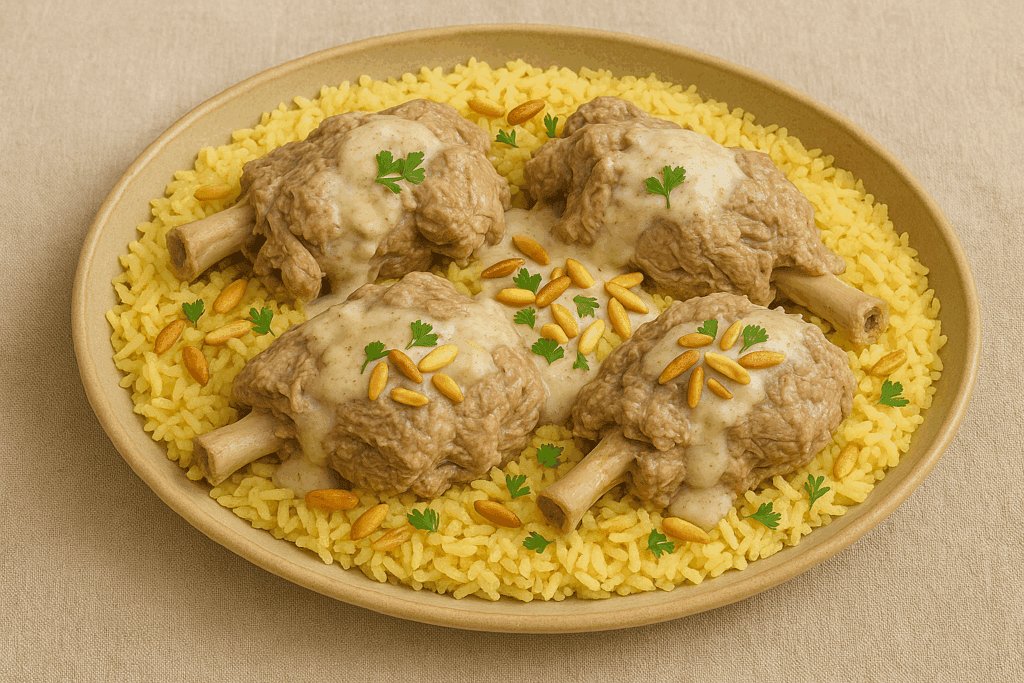
Originating from Jordan, Mansaf is a cherished dish traditionally served during Ramadan and special occasions. At its heart, Mansaf features tender lamb slow-cooked in jameed, a tangy dried yogurt sauce, seasoned delicately with aromatic spices like cardamom and cumin. This flavorful stew is then generously ladled over a bed of fluffy, saffron-infused rice and garnished with toasted almonds and pine nuts. More than just a delicious meal, Mansaf symbolizes generosity and hospitality; it’s commonly served on a large communal platter, bringing families and communities together to share in the spirit of the holy month.
2. Moroccan Harira Soup
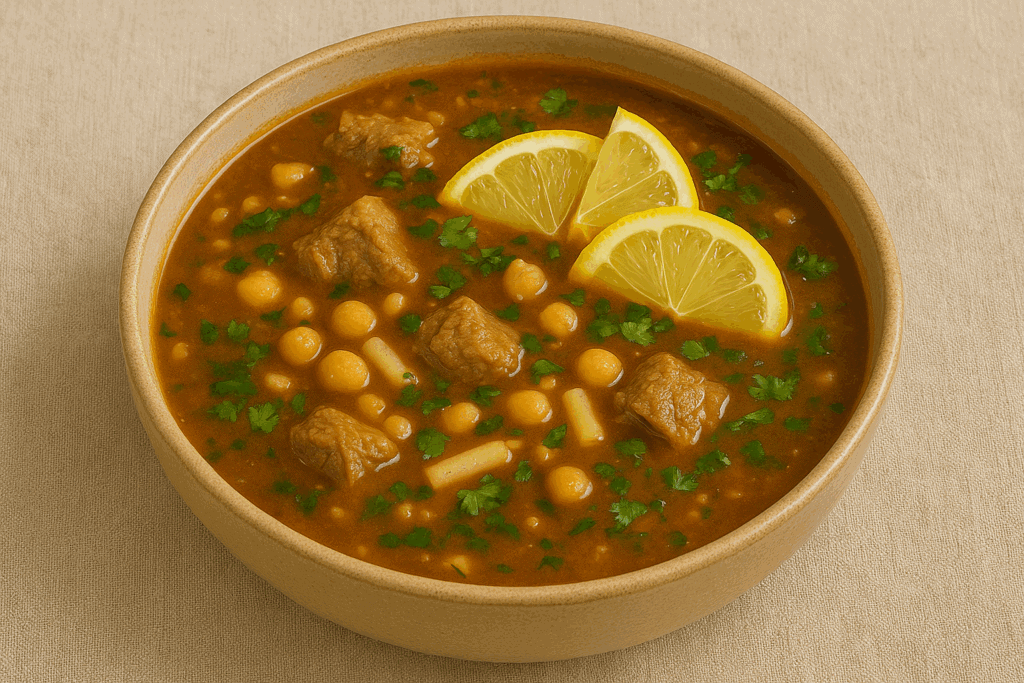
In Morocco, breaking the fast often begins with Harira Soup, a nourishing and hearty dish beloved for its comforting warmth and rich nutritional profile. Prepared with a flavorful medley of lentils, chickpeas, tomatoes, and tender meat, Harira is seasoned with aromatic spices such as cinnamon, ginger, and turmeric, infusing the soup with a distinctly Moroccan flair. Its protein and fiber-rich ingredients provide essential nutrients, replenishing energy levels after a long day of fasting. Served alongside dates and freshly baked bread, Harira isn’t just a meal—it’s a comforting tradition that unites families in gratitude and nourishment during Ramadan.
3. Pakistani Chicken Biryani
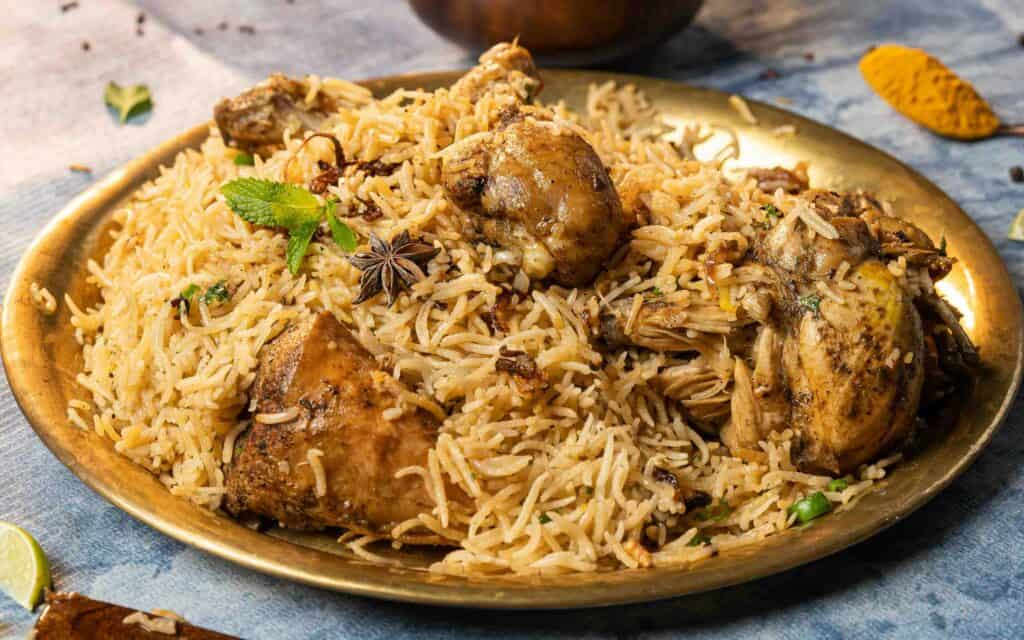
In Pakistan, Chicken Biryani is a beloved Ramadan staple, renowned for its aromatic spices and vibrant flavors. This flavorful dish combines perfectly marinated chicken with fragrant basmati rice, meticulously layered and cooked slowly to infuse each grain with spices such as cumin, cardamom, cloves, and saffron. The addition of fried onions, mint leaves, and fresh cilantro adds depth, balancing richness with freshness. While similar to its Indian counterpart, Pakistani Biryani often boasts a bolder spice profile and a richer, more robust flavor. Served with cooling raita, it’s a satisfying dish that graces many iftar tables throughout Ramadan.
4. Indonesian Kolak Pisang
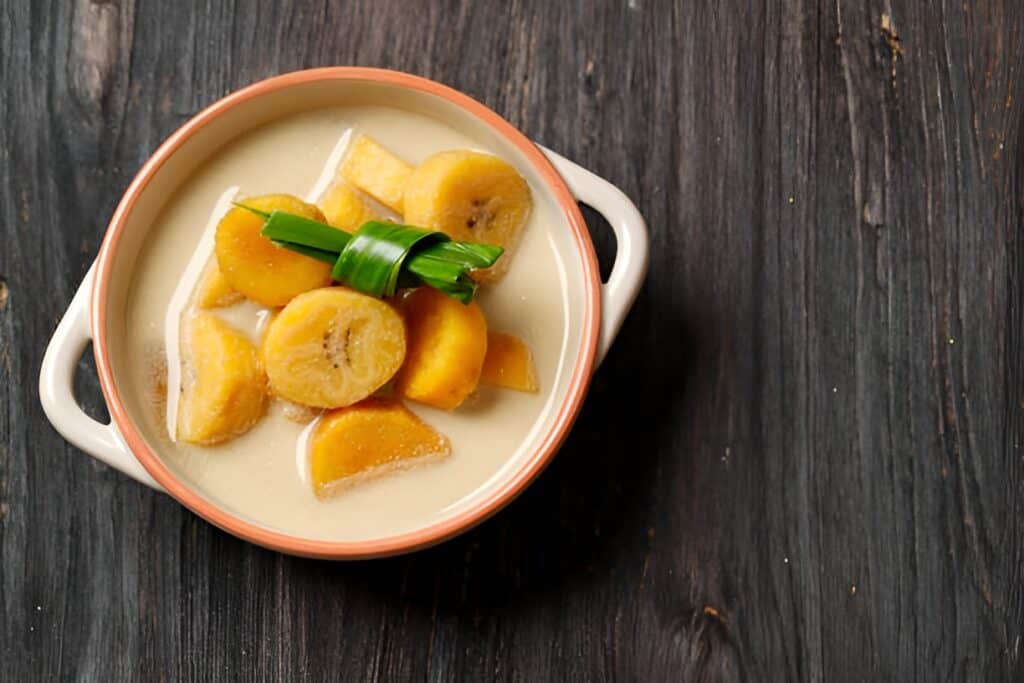
Sweet, comforting, and delightfully creamy, Kolak Pisang is a beloved Indonesian dessert frequently enjoyed during Ramadan.Made from ripe bananas gently simmered in a delectable blend of rich coconut milk and aromatic palm sugar, this traditional treat owes its distinctive fragrance to pandan leaves, a staple flavoring in Southeast Asian cuisine.Its natural sweetness and velvety texture make it an ideal choice for breaking the fast, providing instant energy and satisfaction.Throughout Indonesia, Kolak Pisang symbolizes the warmth of communal gatherings and remains a cherished staple on iftar tables, uniting loved ones in celebration and gratitude during the holy month.
5. Turkish Pide Bread
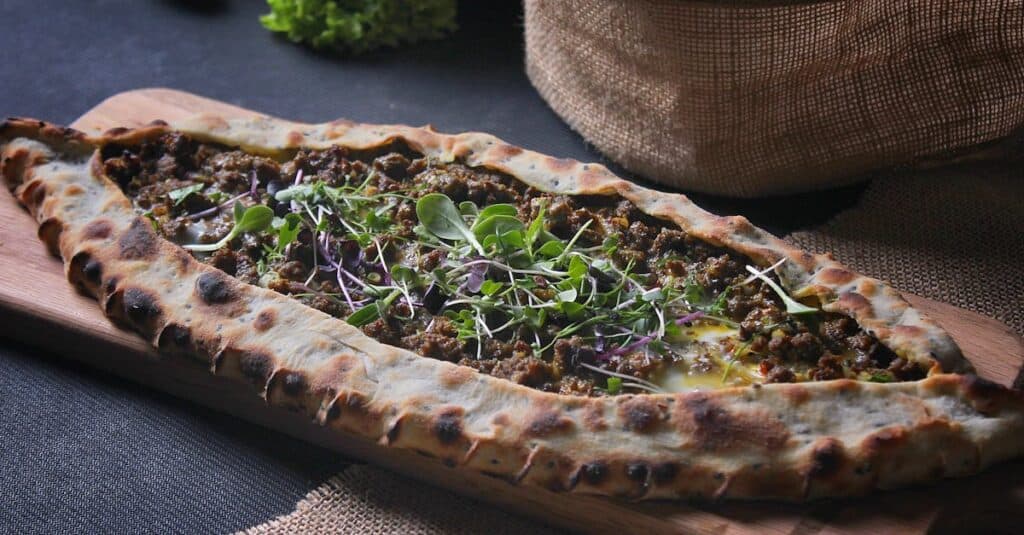
In Turkey, Ramadan wouldn’t be complete without the freshly-baked and enticingly aromatic Pide Bread gracing dinner tables each evening. This traditional flatbread features a soft, fluffy interior encased by a golden, slightly crisp crust, often topped with sesame and nigella seeds for extra flavor and texture. Prepared daily in bakeries across Turkey, its arrival signals the approaching iftar meal, symbolizing generosity and communal sharing. Families and neighbors gather eagerly around freshly baked loaves, often tearing pieces by hand to share together. Pide Bread’s comforting aroma and satisfying taste make it an integral part of Ramadan’s culinary and communal traditions in Turkey.
6. Egyptian Umm Ali
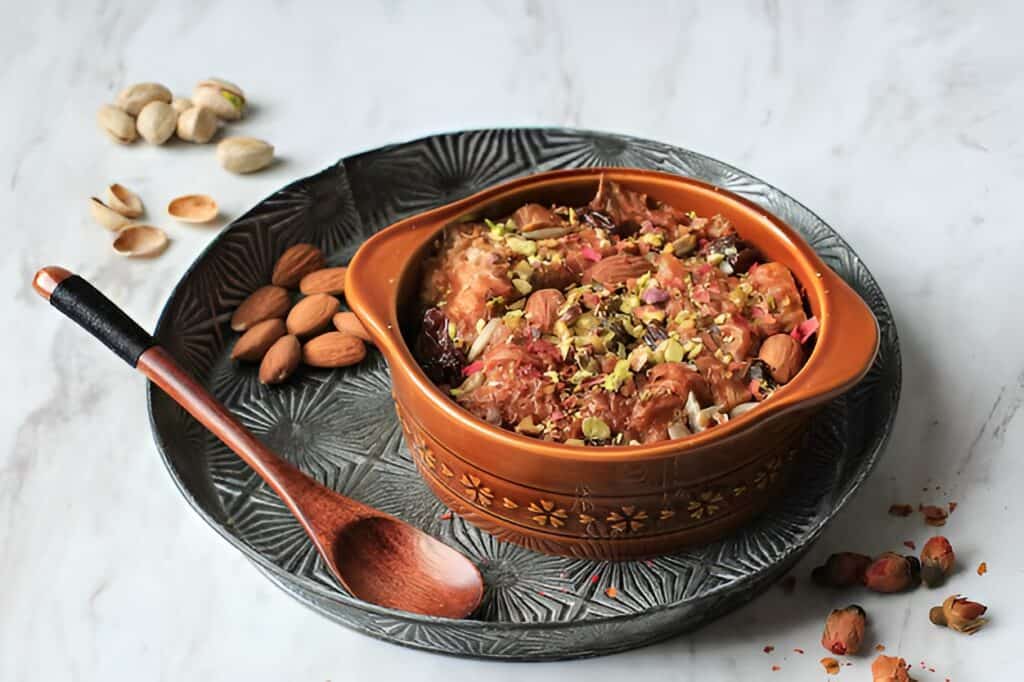
Rich, creamy, and irresistibly comforting, Umm Ali is Egypt’s beloved dessert, frequently savored during Ramadan gatherings. This delightful pudding-like treat features layers of flaky pastry baked in sweetened milk and cream until golden and bubbling. Generously sprinkled with crunchy almonds, pistachios, raisins, and coconut flakes, its texture is an enticing blend of creamy softness and delightful crunch. Originating from Egyptian folklore, Umm Ali—translated as “Mother of Ali”—has a cultural legacy rooted in generosity and hospitality. Served warm and fragrant, this indulgent dessert brings families together, making it an essential component of Ramadan festivities across Egyptian households.
7. Indian Haleem
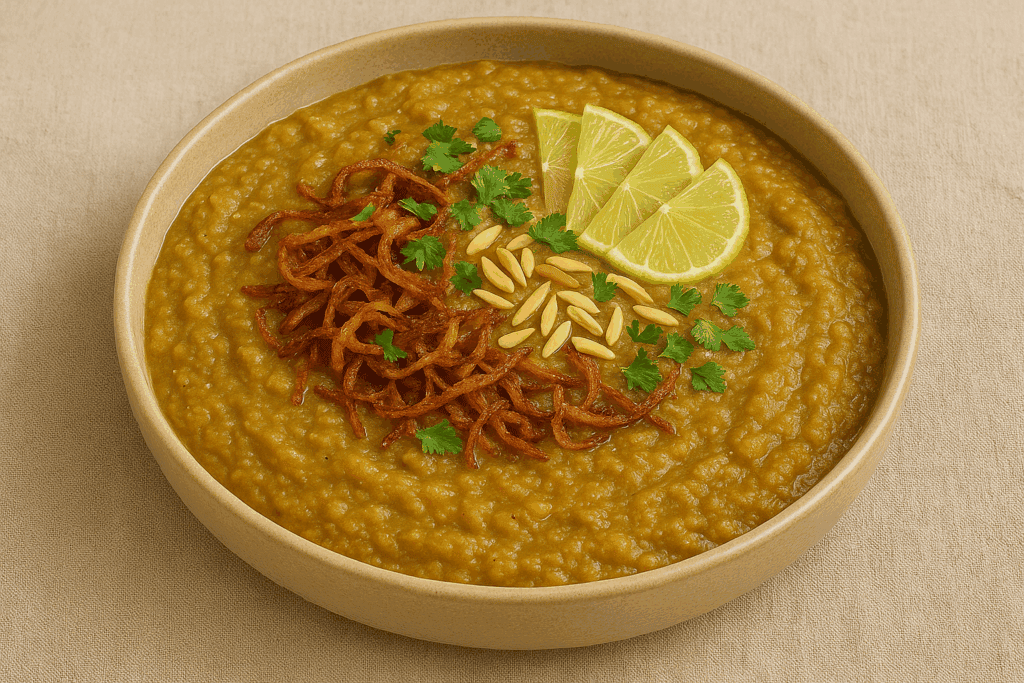
In India, Haleem is a cherished Ramadan delicacy renowned for its hearty texture and wholesome nourishment. This comforting stew is crafted through hours of slow cooking, combining tender meat—often lamb or chicken—with wheat, lentils, and aromatic spices like cinnamon, cardamom, and cloves. The slow simmering results in a creamy, porridge-like consistency, rich in protein and fiber, perfect for replenishing energy after prolonged fasting. Garnished generously with crispy fried onions, fresh mint, and lemon wedges, Haleem offers a satisfying blend of flavors and textures, making it an indispensable favorite at iftar tables across Indian communities during the holy month.
8. Lebanese Fattoush Salad
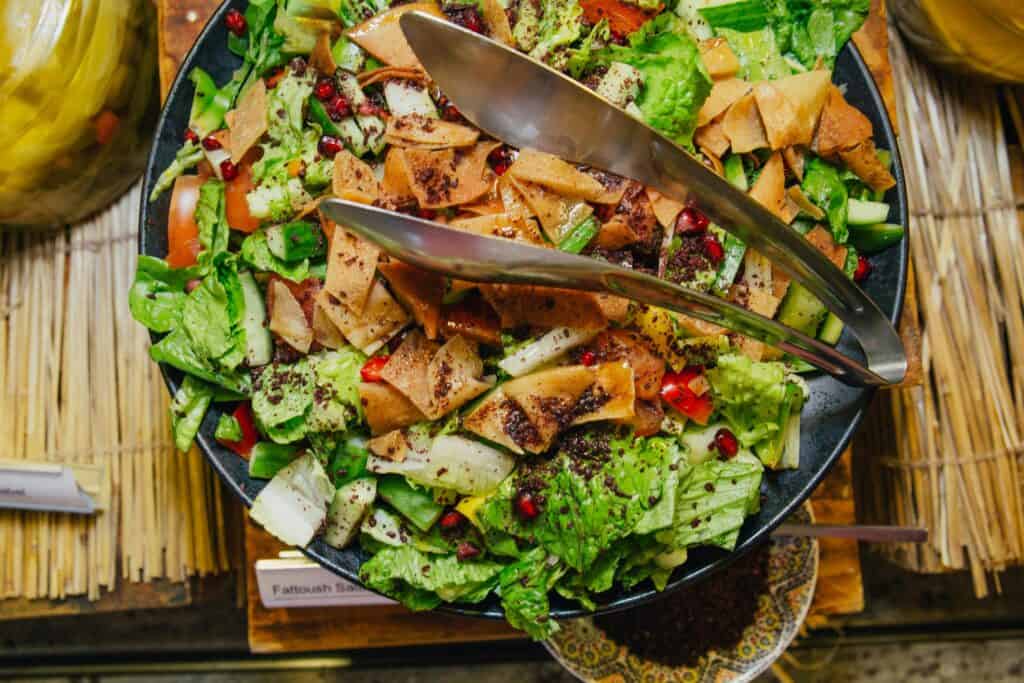
Bursting with freshness and vibrant colors, Fattoush Salad is a staple on Lebanese Ramadan tables, offering a refreshing complement to heavier dishes. Made from crisp cucumbers, ripe tomatoes, radishes, lettuce, fresh mint, and parsley, this salad is uniquely enriched with crunchy toasted pita bread pieces. Its signature dressing—a tangy blend of olive oil, lemon juice, garlic, and sumac—adds zesty brightness, enhancing both flavor and nutrition. Rich in vitamins, fiber, and hydration, Fattoush Salad provides essential nutrients, revitalizing the body after a day of fasting and making it an ideal, healthful choice for iftar meals throughout Ramadan.
9. Malaysian Bubur Lambuk
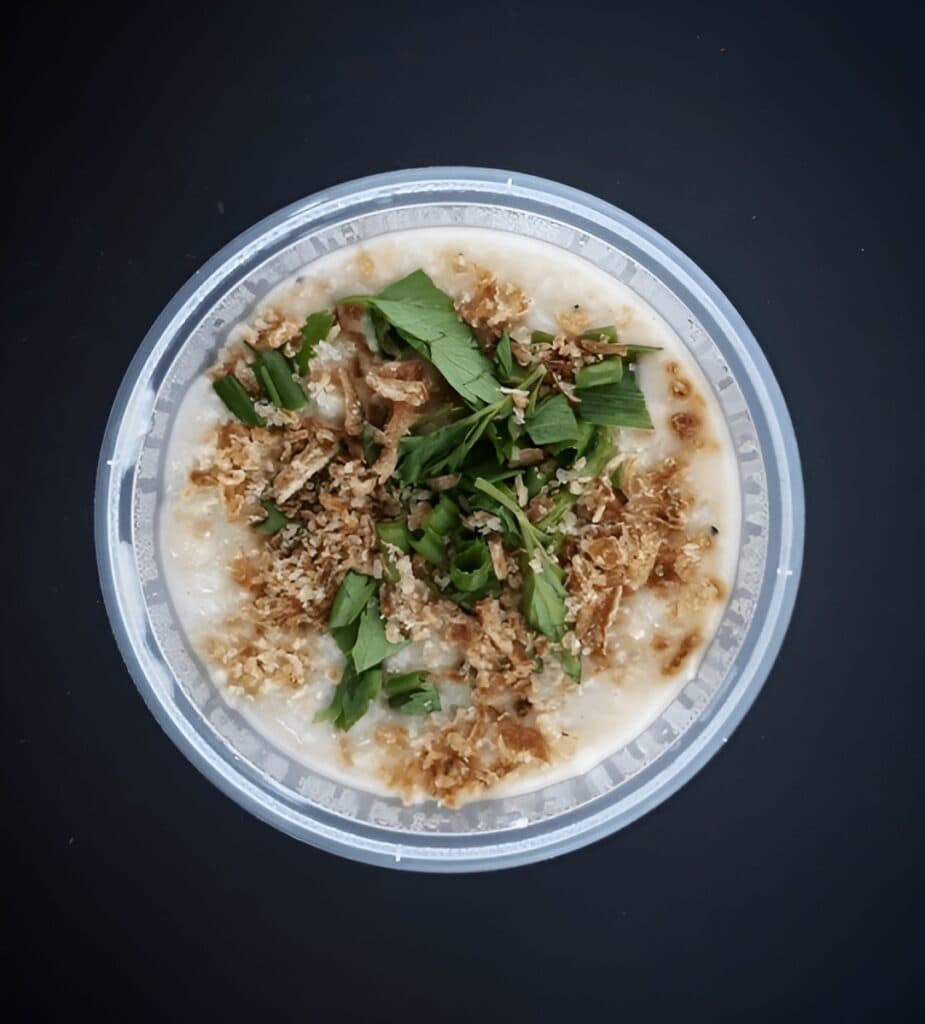
In Malaysia, Bubur Lambuk holds a special place during Ramadan, known not only for its comforting flavor but also for its spirit of community and generosity. This savory, creamy rice porridge combines tender pieces of meat—commonly chicken or beef—with fragrant spices such as ginger, cloves, star anise, and cinnamon. Slow-cooked until silky and rich, Bubur Lambuk often includes aromatic herbs, coconut milk, and vegetables, creating a wholesome and nutritious dish. Mosques and community centers traditionally prepare large batches, generously distributing portions to locals, symbolizing unity, compassion, and shared blessings throughout the holy month.
10. Somali Sambusa
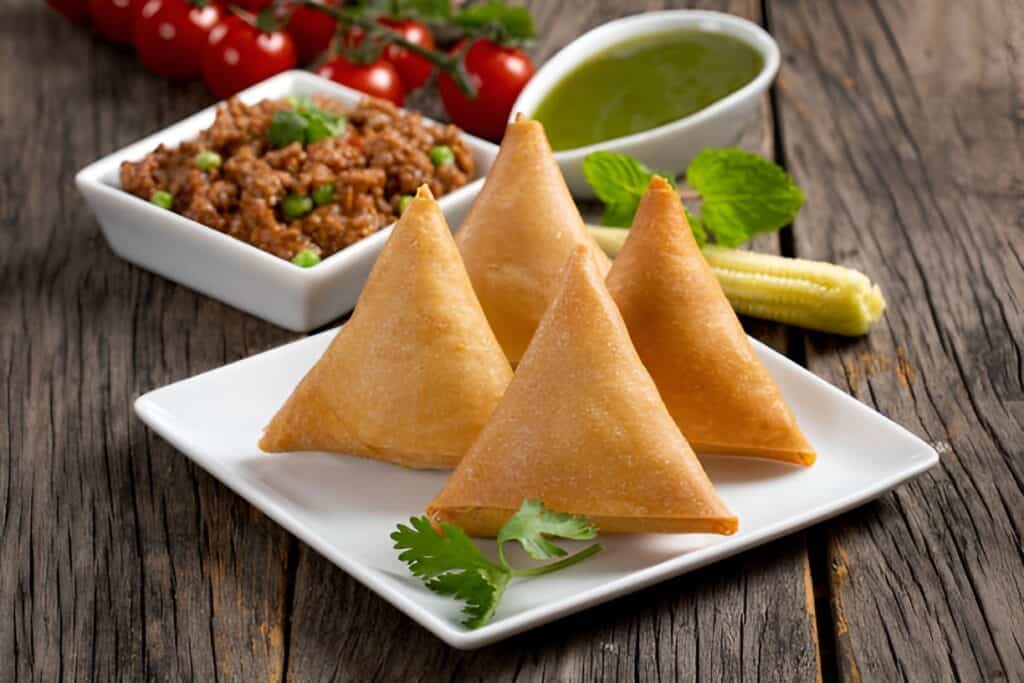
Crisp, golden, and irresistibly flavorful, Somali Sambusa is a beloved snack during Ramadan, enjoyed by families across Somalia and beyond. These triangular pastries feature thin, crispy dough generously stuffed with savory fillings like spiced minced meat, onions, garlic, and aromatic herbs; vegetarian versions filled with lentils or potatoes are also popular. Deep-fried to perfection, Sambusas share similarities with Indian samosas, yet distinguish themselves through their unique spice blends, often including cumin, coriander, and chili. Often served hot alongside tangy dipping sauces, these tasty treats are a staple at iftar gatherings, symbolizing hospitality and warmth during the holy month.
Wrap-up
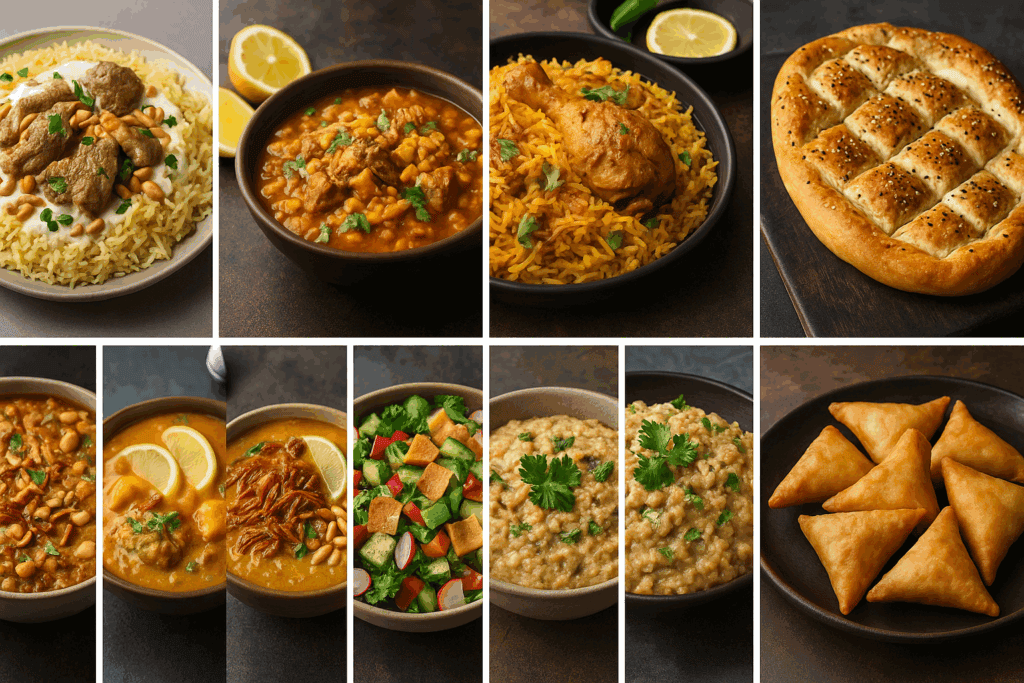
Exploring these ten flavorful Ramadan dishes offers a delicious glimpse into the rich culinary traditions celebrated around the world during the holy month. From hearty stews and aromatic rice dishes to comforting soups and indulgent desserts, each recipe carries its own unique story, reflecting distinct cultural identities and communal values. Together, these diverse dishes highlight the beautiful unity and diversity of the global Muslim community, brought together by faith, tradition, and the shared joy of breaking the fast. This Ramadan, consider adding some of these international flavors to your iftar table, celebrating the spirit of togetherness through the universal language of food.





